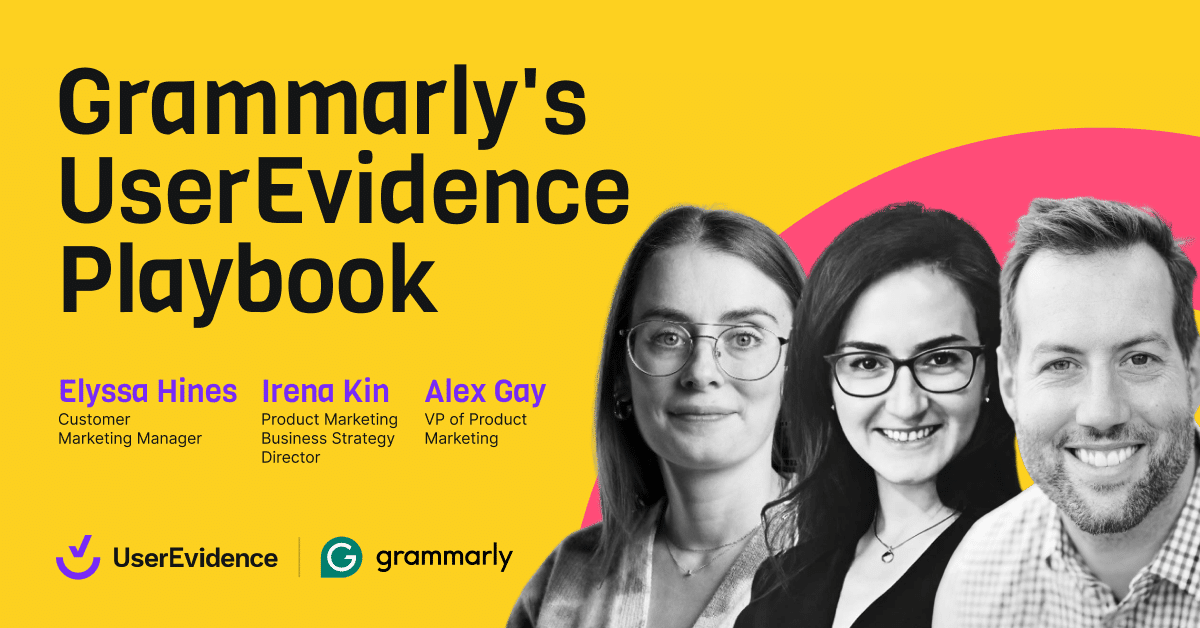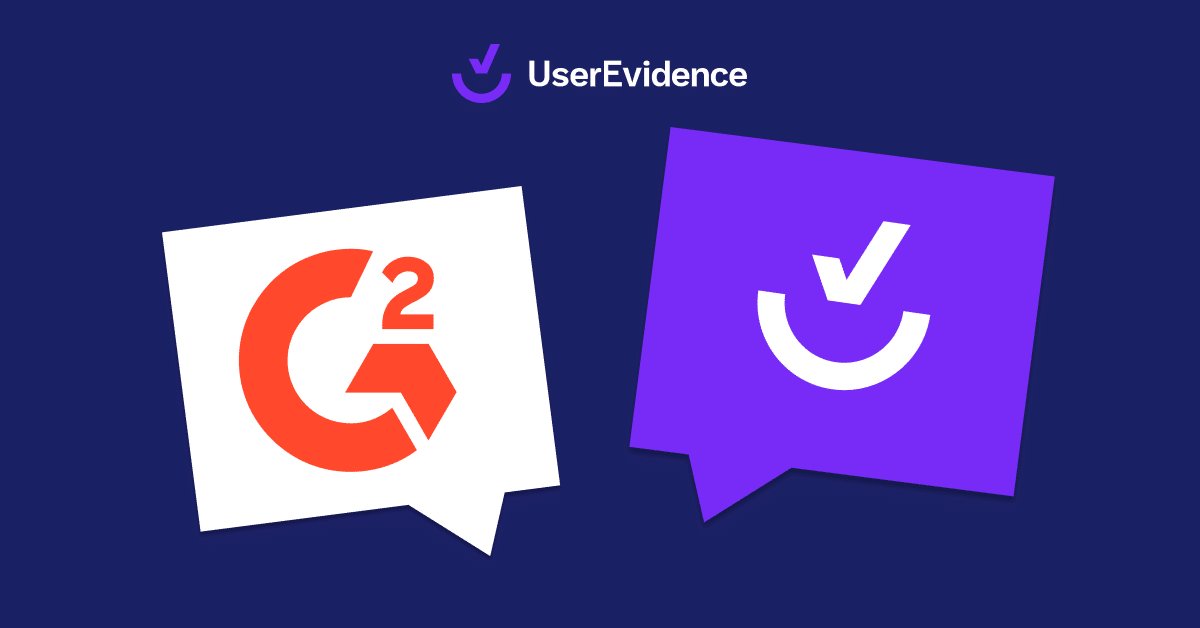If I asked you to describe the best meal you’ve ever had, you probably wouldn’t tell me about last week’s microwaved leftovers.
The most memorable and mind-blowing meals are fresh: they feature unique flavors, top-notch ingredients, and, most importantly, the care of an expert chef.
Turns out, your B2B buyers’ taste in content works the same way. They don’t want “leftover” ideas you rehashed from the top of the SERPs and blended into a bland blog post. They crave insightful, original content.
Today, that’s a must-have for B2B SaaS brands.
Understandably, consumer trust is at an all-time low. Buyers are sick of flimsy, SEO-stuffed content, and they believe what their peers say way more than what vendors boast.
Unbiased third-party validation reinforces your brand’s expertise and helpfulness — and taking this path to content creation is now table stakes.
An insightful, long-form report is an excellent medium for sharing original data. Done right, an original data report shows your audience they can trust you and fuels your content pipeline and GTM strategy for months or more.
If you’re ready to craft legitimately interesting content that builds trust between your brand and buyers, here’s the step-by-step process I use to create original research reports.
Your 7-step recipe for data-backed, original research content
Before we dive into the steps, let’s start with the end in mind. Camille Trent, Director of Content and Community at Teal, recommends asking this question every time you sit down and brainstorm new content:
A good answer? Hard-won, in-depth research. The seven steps below will help you plan and create an original report that packs a punch.

1. Start with your “why” before you start any research
“Better to ask for forgiveness than permission” may have been a great motto during my teenage years. Sorry, Mom and Dad.
But as a research philosophy, it’s a terrible idea. Instead, work with your GTM stakeholders to gain buy-in for the report vision upfront.
Each GTM team — customer success (CS), sales, enablement, marketing, and product — has their own priorities and goals. Plus, they tend to get their customer data in silos and from different places, so they often operate on different assumptions. Your task is to get everyone on the same page by narrowing the focus of your report to a specific story.
As John Bonini, the founder of Some Good Content and former head of marketing at Databox says, “All research needs to start with a strategic narrative.”
To identify that narrative, consider the questions your customers ask, the problems they’re trying to solve, and what they want from you. When you find the overlap between what matters to them and what your product does best, you’ve found your sweet spot — the why behind your marketing research.
From there, each part of the research process should flow from that why:
- The product data you pull from your platform
- The questions you ask in a survey or interview
- The experts you quote to back up your findings
- The story your research report tells
- The channels you use to distribute the finished product
2. Choose the data to support your report
Camille from earlier is right: Standout content truly starts with insights your audience can’t get from any other company or competitor — and those insights come from original data of two types:

To tell a convincing story, you should infuse your report with both data types. People often say one thing and act differently, but their beliefs and behavior each inform how they make decisions. That’s why a well-rounded research report explores both.
No matter what type of research you use, you need to gather the data firsthand. Existing industry statistics or third-party data collection might have a place in other pieces of content, but you should build your report on zero- and first-party data. Zero-party data is information that people share voluntarily (think a survey or form response), and first-party data comes from channels you own (like usage data from your product or platform).
These data types are more trustworthy and more accurate than other data sources — plus they’re unique to your brand.
These two data sources (one qualitative and one quantitative) are your best bets for original data:
- Voice of the Customer (VoC): Gather your audience’s opinions and experiences in their own words. Use a mix of multiple-choice or short answers and long-form questions where you can capture testimonials or detailed explanations of their opinions.
- Product data: Usage data from your platform is the gold standard for original research because no one but you and your teammates have that information; your audience literally couldn’t find it anywhere else. Behavior data is also unbiased, and, when combined with VoC insights, it paints a pretty complete picture of customer sentiment.
You can choose one or the other, but we recommend making a data cocktail and using both kinds in your report.
3. Bring in the data
Now, it’s finally time to put on your researcher hat and start collecting data. Gathering product data from your platform will probably be pretty straightforward. But when it comes to qualitative data capture, you’ve got a few options:

Here’s some advice: Get scrappy with your data collection.
There’s more than one way to collect customer testimonials. If your brand has a podcast, for instance, create a form that you share with every guest to capture data. Want to quickly scale survey responses? Have each function on your GTM team send the survey to five LinkedIn connections. You’ll gain a bank of data from trusted sources who are the right fit.
Need a refresher on what makes a great form or survey? Let’s brush up on a few best practices for asking good questions:
- Choose simple words over complicated ones. Try “use” instead of “utilize.”
- Offer specific choices instead of vague ones. When asking how long someone spends on a task daily, offer “15 minutes or less” as a choice instead of “Not too much time.”
- Try to keep bias out of your survey questions. Include both ends of a scale (“How satisfied or dissatisfied were you?”), and offer an equal number of positive and negative answer options in multiple-choice and rating questions.
- Use open-ended questions sparingly. Save them for the most important questions where you need an in-depth response, and order questions topically. If you ask a multiple-choice question about a feature, you could follow it up with an open-ended question about that feature.
- If possible, stick to less than 10 questions per survey. Each additional question increases your chances of dropoff, leading to fewer full responses.
Wondering which tools you should use to collect data in the first place? UserEvidence lets you capture customer feedback, curate the best insights, and automate content across channels — all so you can scale trusted social proof of your product’s value. Learn more about how our platform works.
4. Clean and analyze the data
Once the results are in, it’s time to actually dig into what the data’s saying — but first, you’re going to want to tidy things up. Clean your data by looking for outliers:

You’ll need to decide what to do about these responses. There’s no one-size-fits-all answer here. You can include those responses in your results, which might skew your accuracy, or you can exclude them, which could introduce some bias (but might be more accurate).
Speaking of bias: as you analyze your data, look out for any set of responses that suggest a question might have been faulty. If a result seems too good to be true, biased question wording may have skewed responses, so you may need to throw out the results.
Once you’ve addressed gaps in your research, start mining for insights. Visualize the data in different formats — pie charts, bar charts, or word clouds, for a start — that might reveal patterns or unexpected data points that can guide your report.
5. Weave in expertise
To make your data-driven report pop, look to internal and external experts. Their insider knowledge and experience can confirm your research findings and add major credibility.
Start with in-house experts who can back up your claims and explain why the data is saying something. Then, look outside your company.
Their presence in your report adds authority and makes your claims even more believable to your reader.
The more veteran your target audience is, the more important it is to call on these external experts to support the story you’re telling. By adding an additional layer of expertise, you’re speaking the language of senior-level influencers; you know, the ones who can bend the ears of the ultimate decision-makers.
It can be tempting to only create content for “beginner” practitioners because they’re easier to convert and sway, even without expert insights. But when you create content for experienced buyers with SMEs, you’ll get everyone else on board, too.
6. Determine the main insights to highlight
Remember that strategic narrative you defined in step one? It’s time for that “why” to take center stage once again as you tell the story of your report — and ideally, your findings match your original goals.
When my UserEvidence teammates and I surveyed our customers to validate our updated messaging and value proposition, we had three major goals and put our survey questions into three key groups.

Because we started with those clear goals — which matched our research questions — we knew exactly which story to tell after sending our survey and analyzing the results.
But it’s not always that simple. What if your qualitative data and quantitative data are at odds? Maybe your product data and customer survey data disagree about which feature customers use most often, for example. It’s probably time for more research. Start with what your customers said, and let their responses inspire a deeper dive into related product data or another survey to understand the discrepancy.
7. Bake in distribution from the beginning
Your research report isn’t a content snack — it’s the whole damn meal. The beauty of a beefy report is that you can break it up into bite-sized pieces for more versatile and effective distribution to nurture every GTM motion and feel right for each channel.
The content geniuses of the world know that one original research report can fuel your content output for months — even years. From stats and SME quotes for social content to blog posts that expand insights from the report, original research is an immediate win and a long-term investment.
Case in point, when my prior team at Metadata created a massive research report in 2022, we treated it as more than one deliverable. On top of the report itself, we created:
- 6+ articles that dove into different aspects of the report
- An updated version of the report in 2023
- Follow-up articles based on the 2023 numbers
- Charts and visuals that served as shareable gems for social, demand gen, and sales
A regurgitated SEO article serves one purpose: to rank. But a thoughtful, multi-faceted report gives you countless ways to repackage, repurpose, and redistribute to your audience — so chances are, you’ll get amazing reach, too.
Break down customer data silos with UserEvidence
Data silos keep you from creating the kind of unforgettable, insightful content your customers crave. When GTM teams each get their customer data from disparate sources, hearing from your audience becomes a classic case of having too many cooks in the kitchen. And that’s no way to make a meal or build customer trust.
Luckily, you can break down data silos with UserEvidence, the unified customer insights platform built for GTM teams. Collect customer feedback across channels, deliver relevant insights to each internal team, and get recommended next steps you can act on right away.
Ready to give your GTM teams the customer data they need to instill buyer confidence — and create on-brand, original content at scale? UserEvidence can help. Book a demo with our team today.






